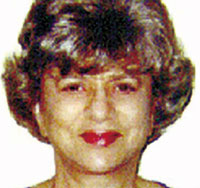Majestically sitting 2,135 feet above the sea level of the
Mediterranean, Madrid gloriously holds the record of the highest
capital in Europe. This beautiful city greets the traveler like a
long-lost relative and embraces the visitor like no other place on
earth. Claiming that
”
the next best place after Madrid is heaven,
”
the city has a way of making the foreigner feel at home.
A STUNNING CITY: Majestically sitting 2,135 feet above the sea level of the Mediterranean, Madrid gloriously holds the record of the highest capital in Europe. This beautiful city greets the traveler like a long-lost relative and embraces the visitor like no other place on earth. Claiming that “the next best place after Madrid is heaven,” the city has a way of making the foreigner feel at home.
THE YOUNGEST CAPITAL
In 1561, King Philip II proclaimed Madrid the capital of Spain and all her colonies. The simple reason for his choice was because of the healthy air and brilliant skies, and because it was located in the center of the peninsula. One of the youngest capitals of Europe, Madrid grew fast and places built on the outskirts soon became a part of the middle of the town.
THE ‘VILLA’
The city has grown into a metropolis of more than 4 1/2 million. Even with its skyscrapers, high fashion and superb technology, Madrid still refers to itself as a “villa” or town. Its official name during the 16th century was “Very Noble, Loyal, Heroic, Imperial and Distinguished Village and Court of Madrid, Capital of Spain.”
THE APERITIVO
Most corporate businesses are open from 9 a.m. to 5 p.m.
However, the laid back way of life is still enjoyed by smaller businesses. Around 1 p.m., when it’s time for the midday aperitivo, stores, museums and offices close. Tapas bars, tabernas and upscale cafes are filled until lunchtime when people pack the restaurants. Between 4 and 5 p.m., offices reopen until 8 p.m., when the aperitivo tradition starts all over again preceding dinner at 10 p.m. Theater, concerts, shows and discos really get going after midnight. In midsummer, the sun doesn’t set until 10 or 11 p.m.
A PLACE CALLED MAGERIT
The beginnings of medieval Moorish Madrid is sketchy, and as legend would have it in 852, the Emir of Cordoba, Muhammad I, chose the lofty ravine atop the Manzanares River as a site for a castle to guard against the Christians who were trying to reconquer the area. The Moors called the village Magerit, which meant “plentiful flowing water.” The Castilians later mispronounced Magerit as Madrid and the name held.
Many underground passageways to the alcazar (castle) have been uncovered in the past 25 years. These areas are available for viewing and can be seen at Cuesta de la Vega, near the Royal Palace. The house and tower of the Lujanes family and the adjacent Periodicals Library, both at the Plaza de la Villa, are well preserved pieces of medieval Moorish Magerit.
Birth of literature
Christian forces led by King Alfonso VI again occupied and held Madrid in 1083, and he used the castle as his headquarters.
King Philip II, of the Hapsburg House of Austria, was responsible for moving the capital and court from Toledo to Madrid. While he ruled from 1556 to 1598 and with his 17th-century successors, Madrid de los Austrias – or the Madrid of the Hapsburgs – was built. Hapsburg Madrid grew into a village. The Golden Age of Renaissance literature was born here, and statues honor Cervantes, Tirso de Molina, Calderon de la Barca and Lope de Vega.
A GLORIOUS CASTLE
The Hapsburg dynasty faded out at the end of the 17th century, King Philip V, grandson of France’s King Louis XIV claimed the throne and established the Bourbon dynasty in 1770. When the alcazar burned down on Christmas Eve 1734, he commissioned architects to rebuild it with a palace that could be compared to Versailles. It took 26 years, with 13-foot thick walls, 2,800 rooms, 23 courtyards and gloriously designed and decorated interiors. Carlos III became the first royal resident.
THE MODEL CITY
Avenues were widened, large squares were set up and Madrid was transformed into a model city of the Enlightenment, known as the Madrid of the Bourbons. King Carlos III, known as “the Construction King of the Enlightenment,” commissioned a neo-classical natural science museum, which later became the Prado Museum and just across the way is the Botanical Gardens. Carlos III was affectionately known as the “King-Mayor” and left a legacy of beautiful fountains and monuments.
INVASION AND INDEPENDENCE
Napoleon invaded Madrid in 1808 and the executions of the resisters on May 2, 1808 were hauntingly immortalized by Goya in his famous painting that can be seen in the Prado. A memorial obelisk with an eternal flame honors those that died. France’s victory was short lived: In 1813, the French were defeated in the Spanish War of Independence and the throne returned to a Bourbon, King Fernando VII.
DEMOCRACY
The early part of the 20th century was a rocky time for Spain, and the 40 years of Franco’s dictatorship stifled freedom, creativity and growth. Franco’s death in 1975 was like a cue to blast forth and enjoy a democratic form of government. The city has become advanced in fashion, the arts and hi-tech communications. This is a vital, pulsating city that exudes a joie de vie that is not found anywhere else. Sports, outdoor attractions, entertainment and the arts are in abundance.










